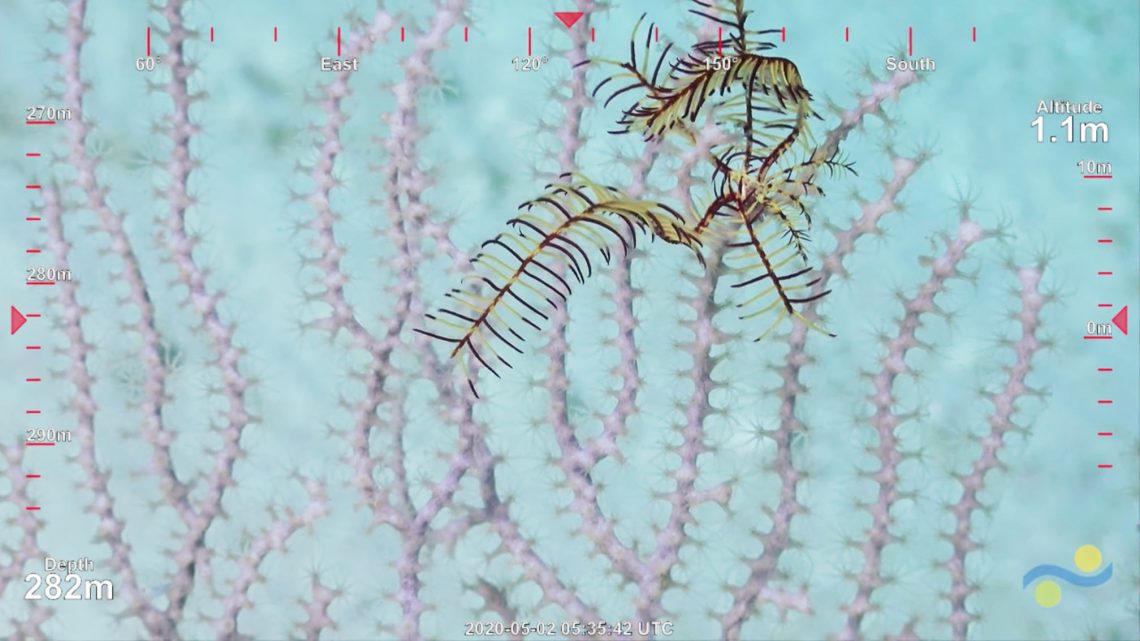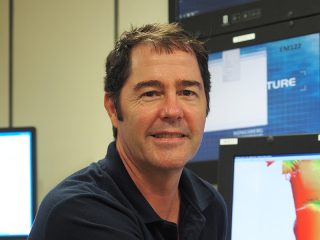The most beautiful squid I had ever seen in my life suddenly appeared on the monitor at my home at Cairns. Long and arrow-shaped, but transparent enough that I could see its internal organs, the ROV pilots were doing this crazy dance at 1000 m depth to try and keep the squid in view. We were just about to commence ROV dive #355 at North Horn on the northwestern tip of Osprey Reef and I was watching the Wirecast screen that allowed me to view the imagery and then speak to add audio commentary over the vision – ultimately to be broadcast live through Facebook and YouTube.
However, we had not yet started broadcasting live and so I was quietly watching as the ROV descended through the water column and thinking about how to introduce this dive to the people watching on land. Instead, it became frantic texting to each other through Google Hangouts “OMG” “Go live, Go live!” Of course, it is not easy maneuvering a 3.2 tonne ROV to match the rapid darting of the squid, and all we got was a cloud of squid ink slowly dispersing in the currents. It was a great start to dive #355 and we went live from the base of a tall cliff that extends out from North Horn.
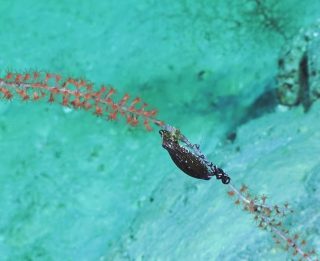
The transect today was chosen to roughly follow a German-led expedition in 2009 that I was previously involved with. Back then, a 1000 m-rated Cherokee ROV recorded standard-definition video internally with an even lower-res feed to the surface – quite primitive compared to the SuBastian ROV 4K video we were collecting now. But in fact, North Horn at Osprey Reef is one of the very few areas anywhere in the Coral Sea Marine Park that have ever had any studies done in the deeper waters, below scuba diving depths.
In 1987, Jacques Cousteau in the famous Calypso ventured into the mesophotic (twilight) zone using a submersible ‘SP350’ to around 240 m. This resulted in the first biological descriptions of mesophotic-shallow coral assemblages by depth. In 2009, the German expedition to 787 m revealed the cold-water coral fauna found below ~450 m, a distinct transition zone due to the thermocline separating the warmer surface waters from the cooler Subtropical Mode Water below.
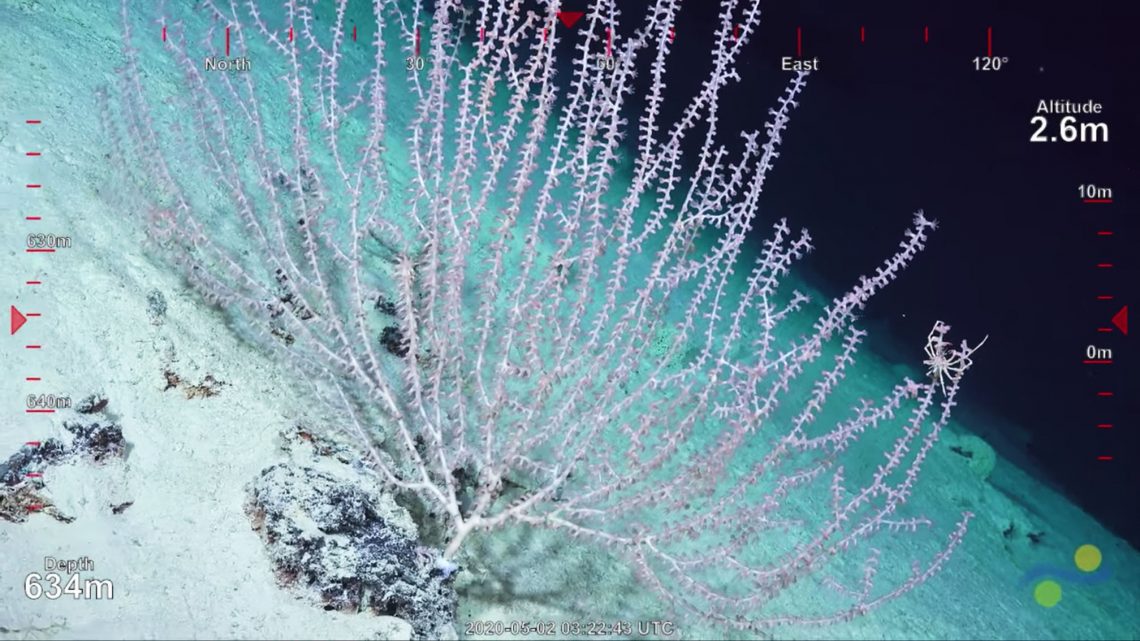
In 2011, a JAMSTEC–James Cook University expedition with the PICASSO-1 ROV also explored the mesophotic zone revealing pygmy seahorses entwined on huge gorgonian fan corals. Then in 2014, the MV Alucia visited North Horn to film Sir David Attenborough for ‘Attenborough’s Great Barrier Reef’ documentary inside a Triton submersible. I was a scientific advisor for this documentary, helping to show the 3D landscape, or seascape, of Osprey Reef. Visits by the Catlin Seaview Survey with a shallow ~125 m ROV also added to knowledge of mesophotic coral ecosystems here.
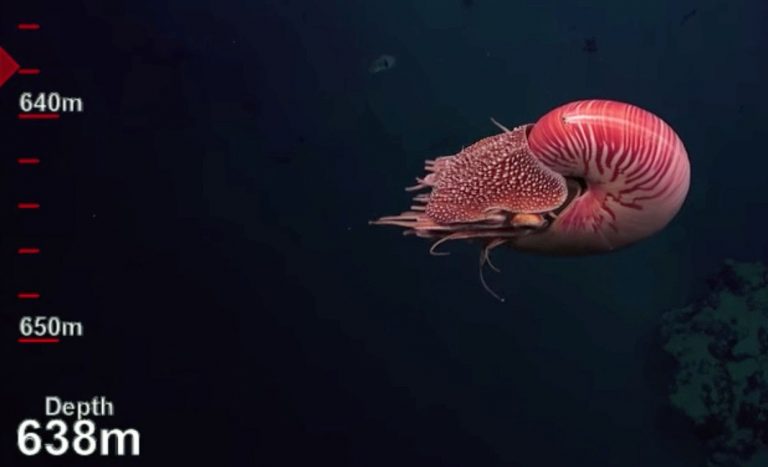
Today though, we started at 1000 m and over the next six hours worked our way slowly up the steep rise towards the surface. We had discussed the possibility of seeing live nautilus – Nautilus pompilius – in the dive. These amazing looking cephalopods were seen in the 2009 and 2014 dives. Colleagues have studied nautilus here over many years using baited traps, and tagging them before being released back into the ocean. I have had the privilege of scuba diving with these tagged nautiluses at Osprey Reef. Today did not disappoint. The first nautilus bobbed its way over to us around 700 m, and by the end of the dive, the ROV crew had counted 18 nautilus up to around 500 m depth.
So with the wind picking up and only a few hours of daylight remaining, the transect was terminated at 300 m and the ROV recovered onboard. Plans were then made for the Falkor to continue multibeam mapping around the deeper flanks of this iconic Osprey Reef, which is often described by marine managers as the ‘Jewel in the crown’ of the Coral Sea Marine Park. The dive today with the SuBastian ROV just added many more underwater video ‘gems’ to that crown.
